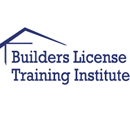Online anytime - 8-Hour Alaska Construction Safety Standards Continuing Education Online Anytime
Training Provider: Builders License Training Institute
Online anytime
 No Reviews
No Reviews
| TICKET TYPE | PRICE | QUANTITY |
|---|---|---|
|
One Workshop Ticket more info» | $99.00 | |
Or call: 954-400-0595 | ||
Please Note: This course is a pre-recorded online anytime seminar which allows you to be trained and certified at the convenience of your own schedule and in the luxury of your own home! Students will have up to six months of access to course content.
Why Should You Take This 8-Hour Alaska Construction Safety Standards Continuing Education Online Anytime Course?
This 8-HourConstruction Safety Standards Continuing Education Online Anytime course is a review of the safety codes required for residential construction. Students will be able to understand and describe the basic components of a construction safety program. They will recognize the hazards inherent at a construction jobsite, and describe ways to prevent those hazards. Finally, students will learn the responsibilities of both the employer and the employee in observing established safety practices.
Learning objectives are provided to facilitate understanding and progress. Informal progress checks throughout the module will help you review and measure your understanding of the material. The assessment at the end of each chapter accurately reflects learning objectives. A 70% score on each assessment is required to move on to the next chapter.
The Following Topics Will Be Covered:
- The Role of OSHA in the workplace
- Personal Protective Equipment
- Falls in Construction
- Stairways and Ladders' Safety and Dangers
- Scaffolds Protection
- Excavations Overview
- Electrical Safety
- Egress/Fire Protection
- Hazard Communication
- Tool Safety
- Materials Handling
What Are The Contractor Licensing Requirements in Alaska?
Alaska state law requires all general contractors to be licensed. Anyone who performs mostly commercial work and residential remodel work of less than 25% of the value of the structure must have a General Contractor License without a Residential Contractor Endorsement. However, anyone who performs new home construction, commercial work, and residential remodel work of more than 25% of the value of the home or structure being altered is required to have a General Contractor License with Residential Contractor Endorsement.
Contractor continuing education is required in Alaska. 16 Hours is required for renewal of a residential contractor endorsement. An applicant for renewal of a residential contractor endorsement for the first time shall document 8 hours of acceptable continued education. Licenses expire December 31 of even number years. Renewal of Endorsement will coincide with renewal of the General Contractor registration.
Get a Residential Contractor Endorsement Application form 08-4161 from:
Department of Commerce, Community and Economic Development Division of Occupational Licensing; Contractors Registration Section PO Box 110806 Juneau, AK 99811-0806
907-465-3035 (Co. name A-K); 907-465-5372 (Co. name L-Z) Fax: 907-465 2974
Chapter 1- Introduction (30 Minutes)
- Learning Objectives: 1) Recognize the role of OSHA in the workplace 2) Distinguish between employer and employee rights and responsibilities 3) Know the employer record keeping responsibilities.
A. Role of OSHA
B. Record Keeping
C. Employee/Employer Rights & Responsibilities
D. Inspections
E. OSHA Resources
Chapter 2- Personal Protective Equipment (30 Minutes)
- Learning Objectives: 1) Describe the causes of the most common workplace injuries2) Name the Personal Protective Equipment (PPE) most often used to protect workers.
A. Protecting Employees
B. Head Injuries
C. Eye Protection
D. Hearing Protection
E. Foot Protection
F. Hand and Body Protection
Chapter 3- Falls in Construction (60 Minutes)
- Learning Objectives: 1) Describe methods of fall protection available to workers. 2) Identify the hazards that prompt the use of fall protection for construction workers.
A. Fall Protection
B. Personal Fall Arrest Systems
C. Guardrails and Safety Nets
D. Skylights and Other Openings
E. Excavations
F. Roofs
G. Training
H. OSHA’s Fall Protection Policies for Residential Construction Video
Chapter 4- Stairways and Ladders (30 Minutes)
- Learning Objectives: 1) Describe safety guidelines and requirements for stairways used at a construction site. 2) List safe practices and requirements for ladders used at a construction site.
A. Stairs/Dangers
B. Ladder Safety
C. Assembly & Use
Chapter 5- Scaffolds (30 Minutes)
- Learning Objectives: 1) Recognize the hazards associated with different types of scaffolds. 2) Understand the procedures that must be followed in order to control and minimize those hazards.
A. Types/Hazards
B. Fall Protection
C. Safe Scaffold Construction
D. Types of Scaffolds
E. Inspections/Training
F. Assembly & Use
Chapter 6- Excavations (30 Minutes)
- Learning Objectives: 1) State the greatest risk that is present at an excavation. 2) Describe the three primary methods of protecting employees from cave-ins. 3) Name factors that pose a hazard to employees working in excavations, and how to reduce those hazards. 4) Describe the role of a competent person at an excavation site.
A. Overview
B. Hazards
C. Safe Working Conditions
D. Protective System Design
E. Inspections
F. Soils & Testing
Chapter 7- Electrical Safety (45 Minutes)
- Learning Objectives: 1) Describe the basics of electrical safety and the injuries that can be caused by improper contact. 2) Identify the hazards of electricity on a construction site and the best way to prevent those hazards from occurring.
A. Electricity
B. Injuries
C. Hazards
D. Power Tools
E. Best Practices
F. Employer Responsibilities
Chapter 8- Egress/Fire Protection (30 Minutes)
- Learning Objectives: 1) Describe OSHA requirements for proper fire prevention, egress, and equipment. 2) Be able to create a working emergency action and fire prevention plan.
A. Emergency Action Plans
B. Exits
C. Fire Prevention
D. Equipment & Training
Chapter 9- Hazard Communication (30 Minutes)
- Learning Objectives: 1) Identify employer responsibilities towards reducing workplace hazards. 2) Be familiar with the information provided in Material Safety Data Sheets.
A. Employer Responsibilities
B. Labeling
C. Material Safety Data Sheets
D. Training
E. Protocol
F. Disposal
Chapter 10- Tool Safety (30 Minutes)
- Learning Objectives: 1) Describe the hazards surrounding the use of hand and power tools. 2) List the important safety tips associated with Powder-Actuated Tools. 3) Explain the basic procedures for safe jack handling.
A. Hazards
B. Safety Rules/Precautions
C. Abrasive Wheels
D. Radial Saws
E. Pneumatic Tools
F. Powder Actuated Tools
G. Employer Responsibility
H. Training
Chapter 11- Materials Handling (45 Minutes)
- Learning Objective: 1) Identify, avoid, and control hazardous materials through proper handling, storage, use and disposal 2) Describe the risks associated with the use of cranes, and the necessary precautions that can reduce risk when cranes are at the jobsite.
A. Hazards
B. Manual Material Handling
C. Mechanical Handling (Cranes)
D. Training
E. Rigging
F. Stacking and Storing
G. Disposal
Review (15 Minutes)
| COURSE LOGISTICS | |
|---|---|
| Certificates | For live classes, certificates will be issued on day of course completion. |
| Food | No food provided |

The Builders License Training Institute helps thousands of builders and contractors get licensed and complete their continuing education requirements each year. Our courses are builder-friendly and guide you through every step of the process. All of our courses are created by real builders with decades of experience and expertise. Study at your own pace 24/7 from any computer or mobile device.

Questions? 954-400-0595


